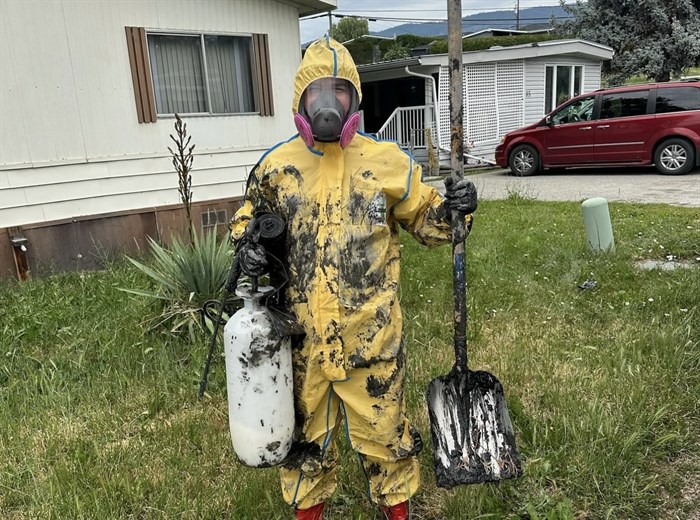
A biohazard cleaner on the job in the Okanagan.
Image Credit: FACEBOOK/PuroClean Kelowna
May 05, 2025 - 6:00 AM
CONTENT ADVISORY
The July 2021 downtown crane collapse in Kelowna killed five people, and after the scene was cleared by first responders and investigators Kristie Nobel suited up. Hermetically sealing herself into a hazmat suit, taping her gloves and donning a special mask, she went in to clean in the scorching summer heat.
Each day presents the biohazard and crime scene cleaner with a different challenge. Sometimes it’s rodent infestations, or fentanyl overdoses, but in this case it was a workplace tragedy.
“I worked up on the rooftop initially when that happened, because they had to get the scene kind of cleaned up for engineers and architects and things to come in, to kind of make sure that it would be somewhat walk-through-able for them,” she said. “They were still actively working on it as a construction zone. So I worked from like 5 p.m. to 4 a.m. cleaning parts of it with headlamps and things like that.”
When she moved to the Okanagan a decade ago she was tired of working retail and wanted to try something new. She got a job cleaning up dangerous messes and the aftermath of tragedies that don't get shown on TV cop shows.
The scenes can be quite shocking.
“Once I found part of a person's brain and the side of their jawbone,” she said. “So that was wild.”
On her first day she found out what was in store for her when she was sent to the scene of a suicide.
“They put me on a job, which was a pretty bad one,” she said. “It was somebody who had unfortunately committed suicide by gunshot. So walking in was interesting. But we had to remove all of the floor, all of the walls, everything.”
When someone dies and police are called, investigators determine whether the death is suspicious and after the authorities clear a scene they return it to the owners.
In the case of unattended deaths when someone passed away and wasn’t found for a while it’s often families that have to hire someone to clean their loved one’s home.
“It's hard when I have to deal with the family. I would say suicides are probably the hardest,” she said. “I meet them, and deal with everything on probably the worst day of their lives. Those ones are hard sometimes, because of course people love to tell you what happened, and tell you their story, and tell you about them, and of course you just listen.”
Nobel has become accustomed to putting herself between families and the grim physical realities about what happens to people when they die.
“At an unattended death, I could say that you would need to pull out carpet and flooring and walls because once you pass away, your body does start to decompose. And you do, in the least gross way of saying it, you leak, basically. You do spread. So if you don't clean or remove everything that needs to be removed, you're going to get mould, you're going to get bugs, you're going to get smells and things like that,” she said.
READ MORE: BAGABUYO TRIAL: 'I will go to jail': Victim confided to friend he hid money from divorce
It takes a keen eye for detail, a thorough work ethic and a strong stomach to be able to take a tragic, grisly scene and return it to people safe and clean. Nobel said that’s what she finds most fulfilling.
“Making sure that the families don't have to deal with it or see it or do anything in there,” she said. “Being able to give back a scene and be like, it's clean, it's safe, you're good to go and you're good to deal with anything that you have to. You won't accidentally see anything that you don't want to.”
It’s not all unattended deaths though. Each day is something different for her. Sometimes she’s cleaning holding cells at the RCMP detachment after they had a particularly messy guest. Sometimes ICBC recovers a vehicle after it has been stolen and it needs to be cleaned of drugs and paraphernalia before it can be returned. Often it’s simply a rodent infestation.
The overdose crisis gets a lot of coverage in the news, but people don’t often talk about what happens to a space after someone dies of a fentanyl overdose. You might hear a lot about overdose statistics and social work projects, but Nobel sees a different side of the situation.
“I have to make sure that I take care of myself and not accidentally stick myself or cut myself or touch anything. So full PPEs, taped-up suits, full face masks, special filters for certain jobs, things like that,” she said. “There's fentanyl cleans, which are usually two people just to be safe. But we always have Narcan and we always have things like that and we always have people checking in.”
Overdose scenes pose a unique set of risks. She said a dangerous dose of fentanyl is too small to see clearly and then there are the people who are curious about what she’s doing.
“You can't really see it, so you can't necessarily take care to avoid that area. So overdoses always make me a little bit nervous. And I know houses where there's been transients in the area because they always like to pop in and see what's going on. So I always lock myself in and I'll make sure people know where I am and share my location with people,” she said.
The job has a lot of hazards for her physical health but just as many for her mental health. Nobel has a set of support systems to help her cope and a strong sense of humour despite the awful things she has to clean.
“After the crane collapse, I did a couple of sessions of therapy for sure, just to make sure that I was OK,” she said. “I've been doing this for a long time and there's still occasionally the ones that I need to talk about or whatever. And I have friends that are like EMTs or work for RCMP and we kind of swap the stories that we can just to kind of get it off our chest.”
Since she’s been doing this work for years she can see situations in a way that some people wouldn’t and see a silver lining in an otherwise upsetting scene.
“I did one where a woman had passed away and then as well as her dog had passed away because she was unattended for a long time, but her dog had curled up next to her. So they kind of passed away together,” she said. “Which was very sad, but kind of cute at the same time.”
She might not always be scrubbing away with chemicals and tearing up hazardous drywall, but she said she wants to stay in the industry and teach others. Nobel said a word to the wise for prospective biohazard cleaners is to make sure you have an iron stomach and do your research before taking the gig.
“I may not always be the one cleaning it up, but I definitely like teaching and teaching people who are genuinely interested in it and don't want to do it just for the shock value of it. Because I've watched a few people get sick on job sites because they wanted to see it,” she said.
“It's not all blood and guts and C.S.I. It's a lot of poop and rodents.”
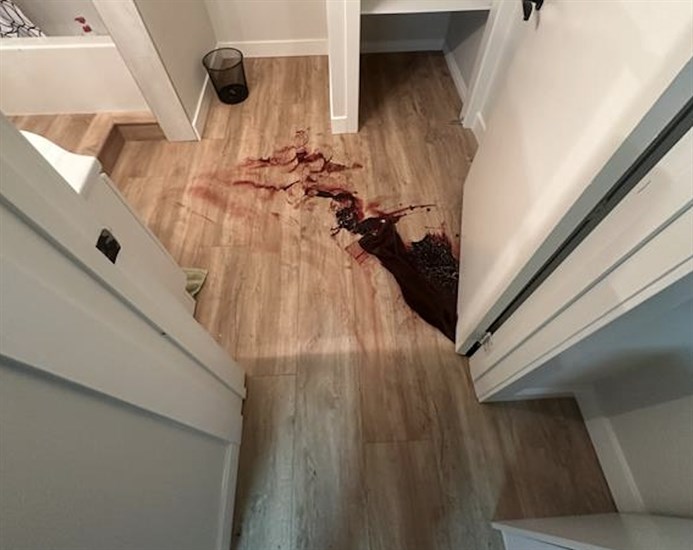
A scene cleaned by Kristie Nobel.
Image Credit: Kristie Nobel
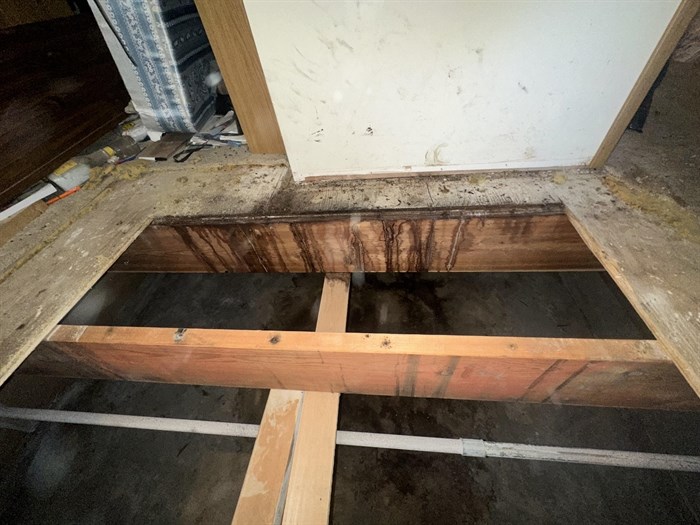
Flooring that had to be removed during a biohazard clean.
Image Credit: Kristie Nobel
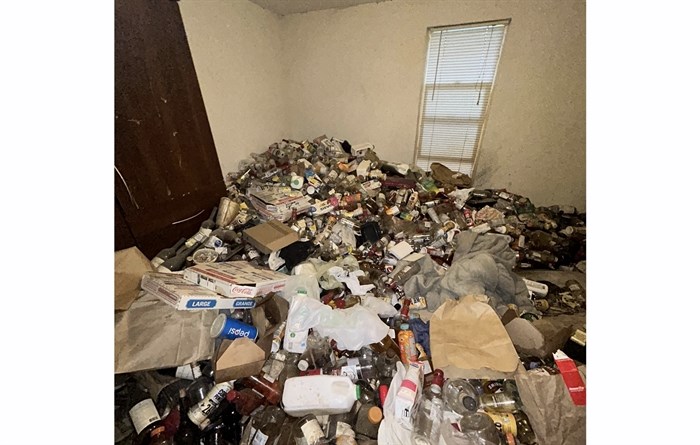
A room in a home cleaned by Kristie Nobel.
Image Credit: Kristie Nobel
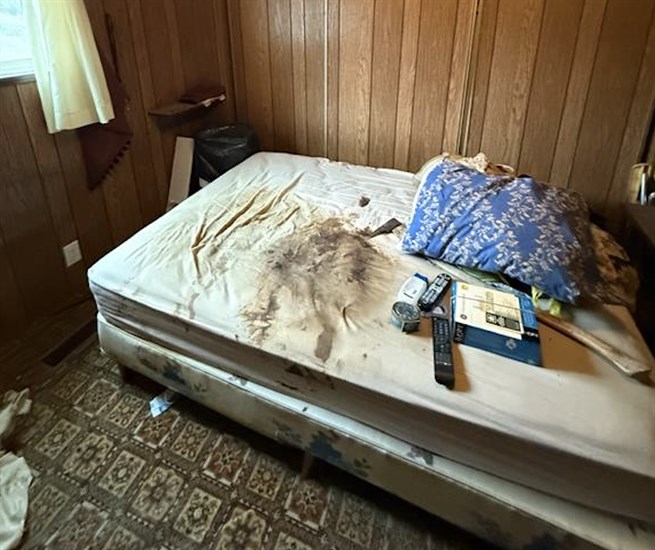
A bed in a home cleaned by Kristie Nobel.
Image Credit: Kristie Nobel
To contact a reporter for this story, email Jesse Tomas or call 250-488-3065 or email the editor. You can also submit photos, videos or news tips to the newsroom and be entered to win a monthly prize draw. Find our Journalism Ethics policy here.
We welcome your comments and opinions on our stories but play nice. We won't censor or delete comments unless they contain off-topic statements or links, unnecessary vulgarity, false facts, spam or obviously fake profiles. If you have any concerns about what you see in comments, email the editor in the link above. SUBSCRIBE to our awesome newsletter here.
News from © iNFOnews, 2025